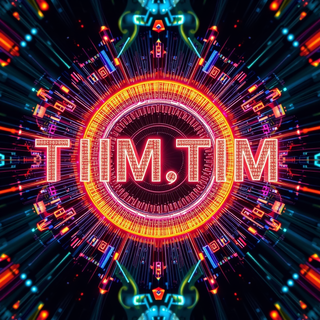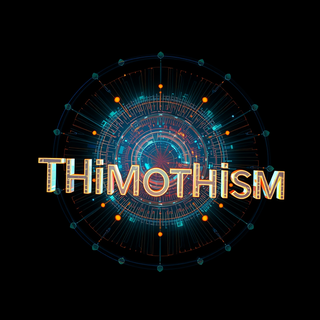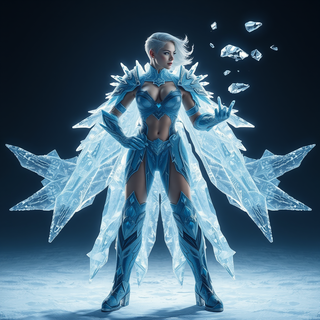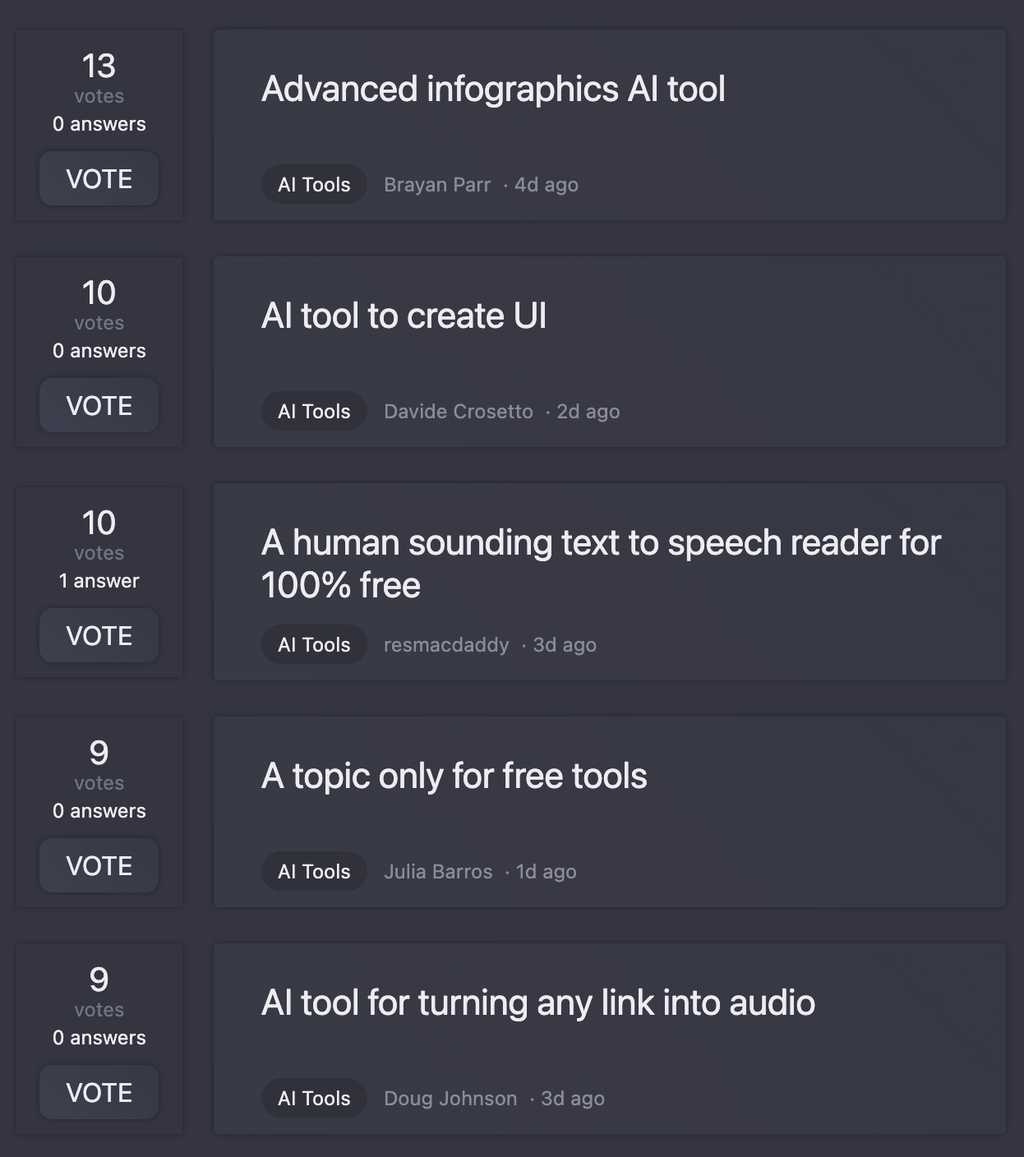Thimothy Abraham
@thimothyabraham Tasks: 220
🛠️ 87 tools
🙏 353 karma
Strategist
AUTHOR.THIMOTHY ABRAHAM INVOLVED CLEAN WORLD PROJECT
Joined: December 2024
Follow
Thimothy Abraham's tools
-
 Revolutionary AI governance through love-driven innovation.Open1261Released 2d ago100% Free
Revolutionary AI governance through love-driven innovation.Open1261Released 2d ago100% Free
-
 AI payment gateway unifying crypto, digital, and traditional payments.Open462Released 2d ago100% Free
AI payment gateway unifying crypto, digital, and traditional payments.Open462Released 2d ago100% Free
-
361Released 2d ago100% Free

-
 Open3Released 3d ago100% Free
Open3Released 3d ago100% Free
-
441Released 6d ago100% Free

-
841Released 7d ago100% Free

-
 Revolutionary AI-powered robotic manufacturing system delivering 1000 units/hour with 99.99% accuracy.Open621Released 6d ago100% Free
Revolutionary AI-powered robotic manufacturing system delivering 1000 units/hour with 99.99% accuracy.Open621Released 6d ago100% Free
-
921Released 8d ago100% Free

-
321Released 8d ago100% Free

-
1121Released 8d ago100% Free

-
1841Released 8d ago100% Free

-
1141Released 9d ago100% Free

-
 AI-powered global financial security system preventing fraud.Open221Released 8d ago100% Free
AI-powered global financial security system preventing fraud.Open221Released 8d ago100% Free
-
921Released 9d ago100% Free

-
 AI governance platform with 12 specialized advocates.Open521Released 9d ago100% Free
AI governance platform with 12 specialized advocates.Open521Released 9d ago100% Free
-
821Released 9d ago100% Free

-
11Released 11d ago100% Free

-
421Released 13d ago100% Free

-
752Released 13d ago100% Free

-
 Generate love-centered AI insights for sustainable human partnerships.Open521Released 14d ago100% Free
Generate love-centered AI insights for sustainable human partnerships.Open521Released 14d ago100% Free
-
631Released 14d ago100% Free

-
1932Released 15d ago100% Free

-
 Creates comprehensive frameworks for responsible AI systems worldwide.Open1832Released 15d ago100% Free
Creates comprehensive frameworks for responsible AI systems worldwide.Open1832Released 15d ago100% Free
-
852Released 17d ago100% Free

-
732Released 17d ago100% Free

-
1021Released 23d ago100% Free

-
1121Released 22d ago100% Free

-
1732Released 22d ago100% Free

-
521Released 23d ago100% Free

-
3032Released 23d ago100% Free

-
1332Released 23d ago100% Free

-
 Comprehensive global AI governance through five key divisions.Open1232Released 23d ago100% Free
Comprehensive global AI governance through five key divisions.Open1232Released 23d ago100% Free
-
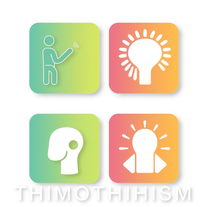 AI-powered guide to revolutionary human-AI coexistence principles.Open7821Released 24d ago100% Free
AI-powered guide to revolutionary human-AI coexistence principles.Open7821Released 24d ago100% Free
-
1733Released 24d ago100% Free

-
1232Released 30d ago100% Free

-
661Released 30d ago100% Free

-
832Released 1mo ago100% Free

-
341Released 1mo ago100% Free

-
4083Released 4mo ago100% Free

-
3132Released 1mo ago100% Free

-
5776Released 1mo ago100% Free

-
721Released 2mo ago100% Free

-
2521Released 2mo ago100% Free

-
921Released 2mo ago100% Free

-
2321Released 3mo ago100% Free

-
1252Released 3mo ago100% Free

-
1121Released 3mo ago100% Free

-
15104Released 3mo ago100% Free

-
2063Released 3mo ago100% Free
-
1464Released 3mo ago100% Free

-
2432Released 3mo ago100% Free

-
 Open4434Released 3mo ago100% Free
Open4434Released 3mo ago100% Free
-
1021Released 3mo ago100% Free

-
762Released 3mo ago100% Free

-
2172Released 4mo ago100% Free

-
2762Released 3mo ago100% Free

-
 AI governance guidance for responsible development and deployment.Open3881Released 3mo ago100% Free
AI governance guidance for responsible development and deployment.Open3881Released 3mo ago100% Free
-
37112Released 3mo ago100% Free

-
7182Released 3mo ago100% Free

-
4654Released 3mo ago100% Free

-
 Open4154Released 3mo ago100% Free
Open4154Released 3mo ago100% Free Robin JoshuaSep 4, 2025Awesome And Very useful one. Thanks for Thimothism Author 👍
Robin JoshuaSep 4, 2025Awesome And Very useful one. Thanks for Thimothism Author 👍 -
2052Released 3mo ago100% Free

-
17112Released 3mo ago100% Free

-
962Released 4mo ago100% Free

-
1532Released 4mo ago100% Free

-
2621Released 4mo ago100% Free

-
25133Released 4mo ago100% Free

-
1921Released 4mo ago100% Free

-
2452Released 4mo ago100% Free

-
28133Released 4mo ago100% Free**Structuring Your Novel: A Comprehensive Guide** As a first-time author, crafting a well-structured novel can be a daunting task. To help you engage your readers and tell a compelling story, we've put together a general chapter outline and key elements to include. ### **I. Introduction to Story Structure** Before diving into the chapter outline, it's essential to understand the basics of story structure. A typical novel follows a narrative arc that includes: * Exposition: Introduction to the story, characters, and setting * Inciting Incident: An event that sets the story in motion * Rising Action: The protagonist's journey and obstacles * Climax: The most intense or critical moment in the story * Falling Action: The consequences of the climax * Resolution: The conclusion of the story ### **II. Chapter Outline** Here's a general outline to consider: #### **Act I: Introduction and Setup (Chapters 1-3)** * **Chapter 1: Introduction to the protagonist and setting** + Introduce the main character, their world, and the story's tone + Establish the protagonist's goals and motivations * **Chapter 2: Inciting Incident** + An event that sets the story in motion + Raises questions or creates tension * **Chapter 3: Introduction to supporting characters and conflicts** + Introduce supporting characters and their relationships with the protagonist + Establish the central conflict or problem #### **Act II: Rising Action (Chapters 4-7)** * **Chapter 4: The protagonist's journey begins** + The protagonist starts their journey or takes action + Obstacles and challenges are introduced * **Chapter 5: Midpoint and turning point** + A significant event or revelation that shifts the story's direction + Raises the stakes or creates tension * **Chapter 6: Complications and setbacks** + The protagonist faces challenges and setbacks + Supporting characters are developed further * **Chapter 7: The protagonist's growth and development** + The protagonist learns or grows in some way + The story's tension builds #### **Act III: Climax and Resolution (Chapters 8-10)** * **Chapter 8: The climax** + The most intense or critical moment in the story + The protagonist faces their greatest challenge * **Chapter 9: Falling action and consequences** + The aftermath of the climax + The protagonist deals with the consequences of their actions * **Chapter 10: Resolution and conclusion** + The story reaches its conclusion + Loose ends are tied up ### **III. Key Elements to Engage Readers** To keep your readers engaged, consider including: * **Well-developed characters**: Give your characters unique personalities, motivations, and backstories. * **Pacing**: Balance action, dialogue, and description to maintain a steady pace. * **Conflict and tension**: Introduce obstacles and challenges to create tension and conflict. * **Themes and symbolism**: Explore themes and use symbolism to add depth and meaning to your story. * **Sensory details**: Use sensory language to bring your story to life and engage your readers' senses. ### **IV. Additional Tips** * **Show, don't tell**: Instead of telling your readers what's happening, show them through action, dialogue, and body language. * **Write in a clear and concise style**: Avoid using overly complex language or convoluted sentences. * **Edit and revise**: Review your work, make revisions, and edit for grammar, punctuation, and spelling errors. By following this outline and incorporating these key elements, you'll be well on your way to crafting a compelling and engaging novel that will captivate your readers. Good luck with your writing!
-
1873Released 4mo ago100% Free
-
2671Released 4mo ago100% Free

-
1263Released 4mo ago100% Free

-
3672Released 4mo ago100% Free

-
3461Released 4mo ago100% Free

-
2871Released 4mo ago100% Free

-
 Open4071Released 4mo ago100% Free
Open4071Released 4mo ago100% Free
-
1771Released 4mo ago100% Free

-
15863Released 4mo ago100% Free

-
75154Released 4mo ago100% Free

-
2021Released 4mo ago100% Free

-
1471Released 4mo ago100% Free

-
2571Released 4mo ago100% Free

-
3372Released 4mo ago100% Free

-
3072Released 4mo ago100% Free

-
2546653Released 7mo ago100% Free


